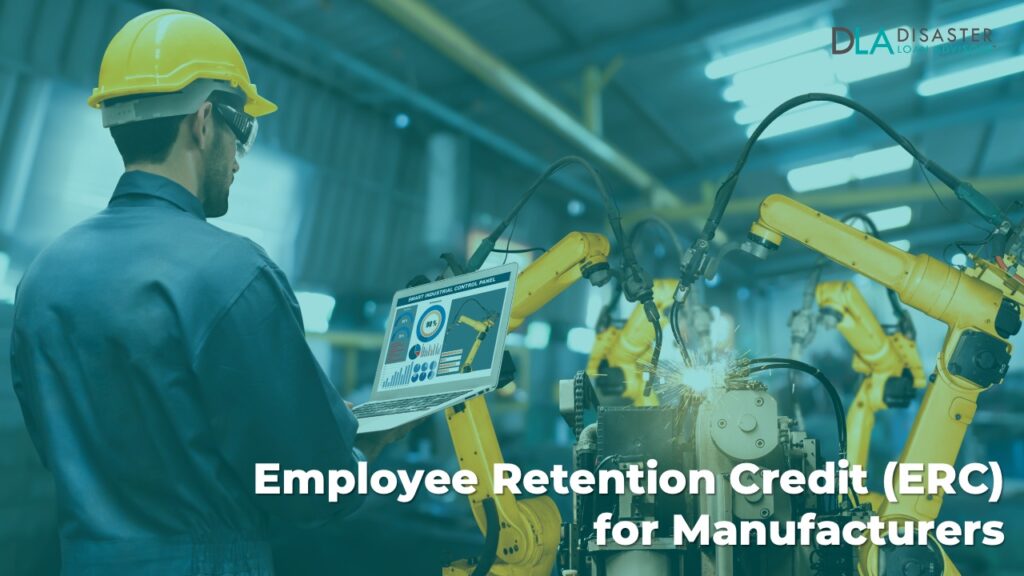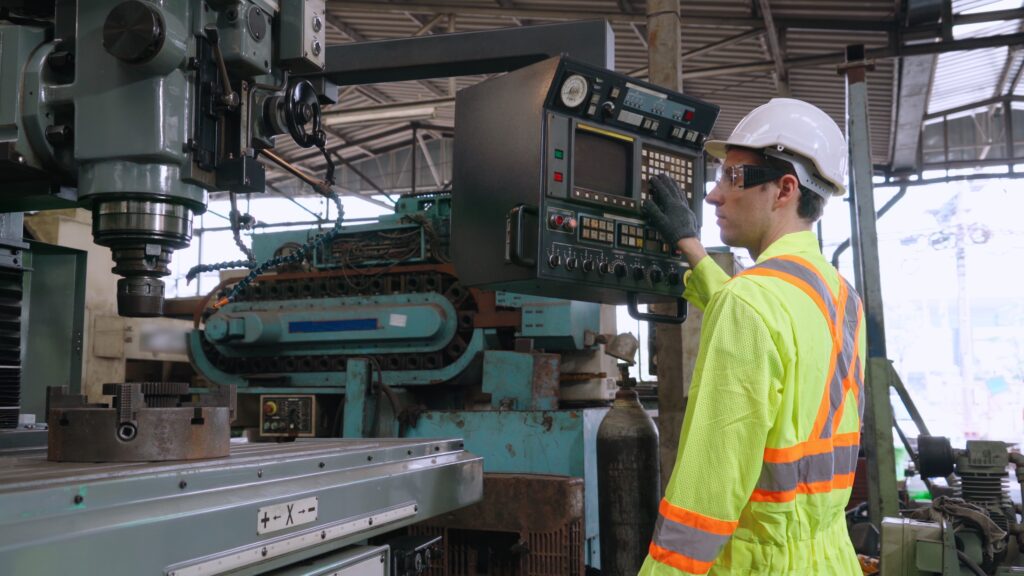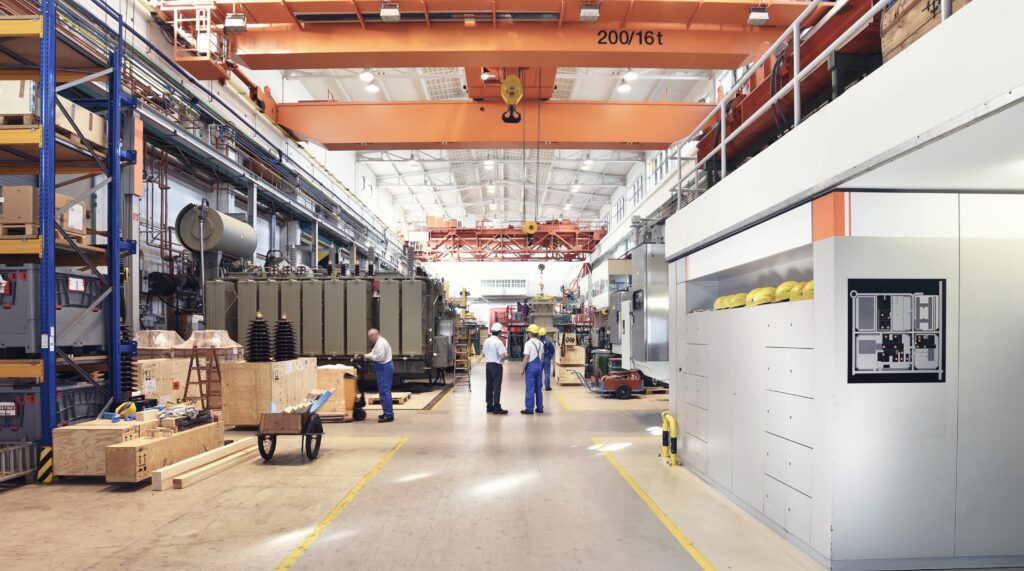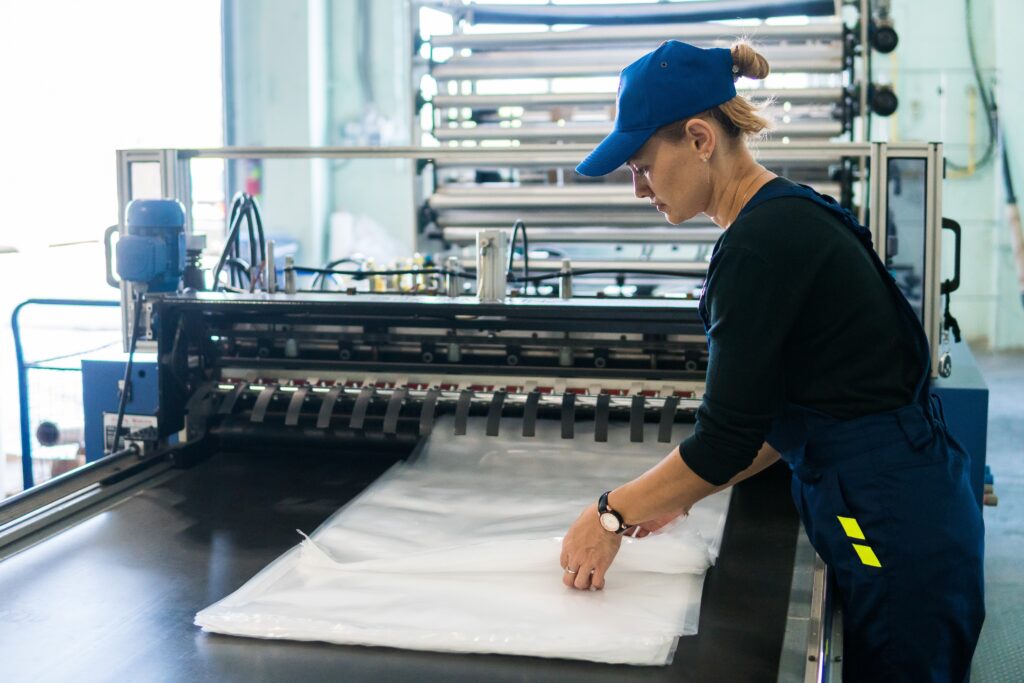
The pandemic has been an unusual challenge to businesses around the U.S., and the manufacturing businesses were particularly hit hard. Due to COVID, manufacturing businesses have had to operate while following strict health protocols. The supply chains of 94% of Fortune 1000 companies have been disrupted by the pandemic. The manufacturing industry was identified as the most affected sector in the U.S. Census Bureau’s supply chain disruption survey.
The US government and the Internal Revenue Service (IRS) has taken action to help businesses jumpstart their recovery by revamping the Employee Retention Credit for manufacturers. You can use this refund for your production company to mitigate the impact of COVID and recoup some of the expenses associated with it.
Manufacturing companies impacted by the COVID-19 pandemic can still apply for the Employee Retention Credit (ERC) Tax Refund in 2023, 2024, and 2025. To be eligible, the manufacturers must meet specific conditions based on the quarters of 2020 and 2021 and compute a percentage of the payroll paid to employees during that duration.
Be aware that your manufacturing company may have been eligible for the ERTC even if its business operations was partially suspended or its supply chain delays caused you to receive less than expected income in 2020 or 2021. If you were told otherwise, it’s possible that the person giving you advice is not fully familiar with the current ERTC guidelines.
The IRS ERC rules can provide a better understanding of this matter. To determine eligibility for the tax credit, the IRS ERC rules, consider the extent of pandemic-related restrictions imposed by state or local governments on the location of the factory. If the capacity of your manufacturing company was limited by the government from the date of the mandate until it was fully lifted, you might be eligible for the ERC credit and tax refund.
If you own a manufacturing business, you can learn about the tax refund called Employee Retention Credit (ERC) by reading this detailed Quick Start Guide. We’ll cover the eligibility requirements, application process, and useful resources. After reading the guide, you’ll have a better understanding of how to qualify for the Employee Retention Credit and maximize this tax benefit for your manufacturing business.
Key ERC Credit Takeaways You Will Learn:
- ERC for Manufacturers: Understand the specifics of the Employee Retention Credit as it applies to manufacturing industries.
- Eligibility & Requirements: Uncover the unique eligibility criteria and requirements that manufacturing companies must meet to qualify for ERC.
- ERC Calculation & Claiming Process: Learn the specific ways to calculate ERC for manufacturers and understand the process for claiming this crucial credit.
- Optimizing ERC Benefits: Identify strategies manufacturing companies can use to fully leverage the Employee Retention Credit for their benefit.
- Avoiding Common Mistakes & FAQs: Learn to navigate common pitfalls in the ERC claim process and get answers to frequent questions related to manufacturers and ERC.
See Important 2024 Employee Retention Tax Credit Deadline Information at the Bottom of This Article.
What is the Employee Retention Credit For Manufacturers?
From March 12, 2020, to December 31, 2020, eligible manufacturers, industrialists, and mass producers can claim a refundable payroll tax credit equal to 50% of qualified gross wage salaries paid. This credit is called the Employee Retention Credit (ERC) and applies to gross wages paid and some employment taxes.
For the 2021 tax year, eligible employers are allowed to take a refundable payroll tax credit equal to 70% of qualified wages paid between January 1, 2021, and September 30, 2021. The tax credit percentage is calculated based on the calendar quarter and the amount of gross receipts paid in that same calendar quarter.
Manufacturers that were either launched or taken over after February 15, 2020 (referred to as a Recovery Start-up in IRS ERC terms) are eligible to claim employee wages until December 31, 2021.
During the pandemic, the CARES Act introduced the Employee Retention Credit (ERC) to support small and midsize businesses, including production companies. It aimed to motivate employers to keep their employees and prevent layoffs. The ERC has undergone various changes since 2020.
The employee retention credit (ERC) under the Infrastructure Investment and Jobs Act is applicable only to wages paid prior to October 1, 2021. However, recovery startup businesses working towards recovery can claim the ERC until January 1, 2022.

How Does the Employee Retention Credit Work For Manufacturers?
Since its launch, the ERC program has gone through multiple changes to its eligibility requirements and credit amounts. As a result, manufacturers may have difficulty determining if they qualify and how much credit they can receive during a specific period.
To claim the Employee Retention Tax Credit, employers had to take specific steps. Firstly, they had to check if they met the eligibility criteria. Then they had to determine the credit amount for every pay period, subtract it from the payroll tax deposit, and fill out the IRS Form 941-X. This form is a revised version of the original Employer’s Quarterly Federal Tax Return (Form 941) and generally has to be submitted within 30 days of the end of the quarter.
The process for claiming credit has been modified after the closure of the program for Form 7200, which was utilized for ERC. Earlier, if the credit was greater than the tax deposit, the employer could apply Form 7200 to ask for an advance payment and get a refund for the remaining amount.
Employers can apply for the Employee Retention Tax Credit for qualifying quarters up to three years after the Paycheck Protection Program (PPP) ended, even if they received a PPP loan.
Beginning September 30, 2021, there may be changes in the way manufacturing companies claim the tax credit. To claim the credit, company owners must verify the requirements that apply to their situation. They must also provide documentation that confirms the pandemic had adverse effects on their business, such as revenue or capacity restrictions issued by the relevant government, and that they continued to pay their employees during that time. Owners must accurately maintain their employee payroll records, including pay periods and qualified wages paid.
TIP: To maximize the tax credit, you need to figure out which calendar quarters, employees, wages, and payments are eligible while following safety guidelines. Alternatively, you can schedule a free consultation with our experts to find out the maximum qualified wages for the same quarters in 2020 and 2021.
Is My Manufacturing Company Eligible for the Employee Retention Credit? Eligibility Requirements For Manufacturers
Yes, manufacturing companies are eligible to receive the Employee Retention Credit if they meet the criteria mentioned below:
1. Full or Partial Suspension of Production, Business Operations or Trade
Manufacturing companies must prove that their operations were either suspended or partially suspended by governmental order because of the pandemic during the calendar quarter for which they are claiming credit – 2020 and 2021.
In order to determine if a company is partially suspended, tests are needed to check whether the suspended activities make up more than a “nominal” part of the business as defined by the IRS. In Questions 11 and 18 of the IRS Notice 2021-20, nominal is defined as less than 10% of the total gross receipts or the total service hours performed by all employees. This guidance pertains to the Employee Retention Credit under Section 2301 of the Coronavirus Aid, Relief, and Economic Security Act.
2. Significant Decline in Gross Receipts
To be eligible for the ERC, a manufacturer must have had a significant decrease in their gross receipts compared to the corresponding quarters of either 2019, 2020, or 2021. A decrease is considered notable if it exceeds 50% for the same quarter in 2019, in the case of 2020, or 20% for the same quarter in 2019, in the case of 2021.
Example: A manufacturer qualifies for a significant decline if their gross receipts in the second quarter of 2020 drop to $250,000 or below from $500,000 in the same quarter in 2019. Similarly, if their gross receipts in the second quarter of 2021 are $400,000 or lower, they may qualify for the credit.
Gross receipts refer to items such as:
| Type of Gross Receipts | Examples |
| Total sales and revenue | Money earned from selling products or providing services |
| Investment proceeds | Money received from selling stocks or other investments |
| Interest | Money earned from savings accounts or loans |
| Royalties and annuities | Money received for using intellectual property or as a regular income stream |
| Rents | Money received for renting out property |
| Dividends | Money received from owning stocks or mutual funds |
Note: You can claim the credit by amending your payroll tax return within three years from the filing date. If your production factory in Dallas was partially shut down by the state government and you couldn’t continue production during Q2 of 2020, and you filed your quarterly payroll tax return in July 2020, you can amend your return and claim the credit before July 2023.
When calculating the ERC during a gross receipts decline, you need to follow the aggregation rules. These rules mean that if you belong to a controlled group, you should calculate the ERC as a single employer. This rule was established for the ERC under the CARES Act.
The below table shows the group classification of aggregated companies that are eligible for the ERC:
| Category of Aggregated Companies | Description |
| Parent-Subsidiary Controlled Groups | A single entity owns at least 50% of all entities in the group. |
| Brother-Sister Controlled Groups | Each entity has ≤5 individuals owning ≥80% and possessing ≥50% of the voting power. |
| Combined Groups of Corporations | Includes both brother-sister and parent-subsidiary companie |
The rules of aggregation are applicable to entities falling under any of the categories mentioned. This implies that while evaluating eligibility and qualified wages for the ERC, all group members will be treated as single employers. It’s noteworthy that the businesses need not be associated with each other, but if they share the same ownership, they will be consolidated for ERC determination.
For an employer to be deemed eligible for the ERC due to a decrease in gross receipts, the gross receipts of all group members must be considered. If the combined group hasn’t undergone a substantial decline in gross receipts, then no member of the group will be eligible for the ERC.
3. Number of Employees
If you’re a manufacturing company owner and paid wages to less than 100 employees in any quarter of 2020 (or 500 employees or fewer in 2021), you can include the gross wages and salaries of those employees in the calculation of the ERC tax credit. This provision is applicable to both full-time and part-time workers.
To help manufacturers qualify for the Employee Retention Credit during COVID-19, the IRS has outlined conditions that can be used if their business is fully or partially closed.
They are as follows:
1. Reduction in Product or Service Output as a Result of the Pandemic
As the pandemic swept across the globe, several manufacturing companies faced a significant decline in their production output, directly affecting their sales and revenue.
The situation was even worsened by the loss of employees due to the virus, leading to a reduction in productivity. Companies were forced to adapt to the new normal by introducing new work protocols and guidelines to keep their employees safe, often leading to a decrease in their efficiency.
2. Business Operations Disrupted or Altered Due To Pandemic-related Factors
The pandemic brought about several disruptions to traditional business operations, forcing manufacturing companies to re-evaluate their existing models. Businesses had to adjust to remote work, virtual meetings, and other forms of technology-driven communication to continue their operations. But for manufacturing companies, this meant a decrease in their productivity as they could no longer rely on the traditional modes of production.
3. Supply Chain Delays and Disruptions Caused by the Pandemic
As countries started imposing lockdowns and travel restrictions, logistics became a nightmare, leading to severe delays and disruptions. This, in turn, affected the manufacturing companies that rely on a steady supply of raw materials, leading to delays in production and reduced output.
4. Limits on Capacity Due to Social Distancing Requirements
The pandemic led to strict guidelines and regulations regarding social distancing, leading to a reduction in the number of employees that could be present in the manufacturing facility at a given time. This restriction on capacity has been a significant challenge for manufacturers, leading to a reduction in productivity and increased costs.
5. Inability to Work or Cooperate With Vendors, either Domestically or Internationally, Due To Pandemic-related Challenges
Companies have also faced challenges in collaborating with vendors, either domestically or internationally, due to travel restrictions and quarantine requirements. This has led to delays in shipment and a lack of access to necessary resources, further impacting production levels.
6. Your Company’s Production was completely Closed
Your manufacturing company might be eligible for the Employee Retention Credit if it was completely closed due to COVID-19 government orders.

How to Calculate the Employee Retention Credit For Manufacturing Companies?
To accurately calculate the employee retention credit for manufacturers, it is essential first to determine the total gross wages paid in a quarter. This information is necessary, and without it, an accurate credit amount cannot be calculated.
To qualify for the Employee Retention Credit, your manufacturing company can factor in three types of compensation when figuring out the credit:
- Wages paid.
- FICA-tax compensation.
- Health insurance premium expenses.
However, the wages paid must have been made to employees who were continuously employed by the company between March 12, 2020, and September 30, 2021, for your company to be eligible for the credit.
Note: When determining qualifying wages, do not include wage expenses funded by PPP loans. This means it is better to allocate PPP loans towards non-wage expenses or wages that do not result in employee retention credits.
Below table will show you the payment amounts that the government will provide for the years 2020 and 2021.
| Year | Employee Retention Credit (ERC) | Maximum Refund per Employee |
| 2020 | Up to 50% of the first $10,000 of qualified wages for the entire year | Up to $5,000 per quarter |
| 2021 | 70% of the first $10,000 in qualified wages per quarter per employee | Up to $7,000 per quarter |
The payroll expenses for each employee can reach up to $26,000 when adding up the costs for both 2020 and 2021.
If you need to calculate ERC, make sure to check out our detailed guide on how to do ERC calculations.
How Can Manufacturers Claim the Employee Retention Credit?
The process for applying for the ERTC has been revised, but it is still possible to submit an application. It is crucial, however, not to postpone the application, as the deadline for eligibility depends on your company’s previous quarters from 2020 and 2021 and can vary between 2023, 2024, and 2025.
If your company meets the eligibility criteria, the tax refund will be available regardless of any concerns regarding fund availability. However, it is important to submit the application before the deadline to avoid missing out on the ERTC.
To receive the ERC, qualifying manufacturers can use different methods approved by the IRS. The most commonly used method involves filling out a paper version of Form 941-X for the eligible quarters. It’s important to keep in mind that this form cannot be submitted electronically and must be sent to the IRS by mail.
TIP: To maximize your employee retention credit tax refund benefits, it’s recommended that you consult with an ERC Tax Refund Consultant if your company received SBA PPP loan funds during Rounds 1 or 2. This will help ensure proper deduction in accordance with IRS guidelines.

How Can Manufacturing Company Owners Use the Employee Retention Credit to Their Advantage?
For manufacturers looking to manage payroll costs, it is recommended that they consider using the Employee Retention Credit. It’s important to note that the credit must be claimed on Form 941-X and that there are specific qualifying criteria.
Additionally, manufacturers should be aware of how their PPP loan funds and other tax credits may impact the ERC. For those who find the process confusing, Disaster Loan Advisors can offer assistance to simplify the process of claiming the ERC credit.
You can use your tax credit in the following ways:
1. Restore Your Supply Chain
The COVID-19 pandemic has disrupted supply chains across the world. Manufacturing companies have had to deal with shortages of raw materials and disruptions in transportation, leading to delays and increased costs. Restoring your supply chain is crucial to maintaining a steady flow of production.
With the ERC, manufacturing companies can invest in improving their supply chain by sourcing materials from different regions, negotiating better contracts with suppliers, and investing in technology to improve efficiency.
2. Employee Training and Development
When you hire new workers, it’s important to provide them with the necessary training and development. Then what better way to do this than utilizing the ERC?
Through the ERC, you can invest in high-quality training and development programs for your employees. This will ensure that your new hires are well-prepared to handle their job duties while also boosting morale and improving productivity.
3. Rekindle Relationships with Vendors
Manufacturing companies rely heavily on vendors for raw materials, equipment, and other supplies. The pandemic has strained many of these relationships, with vendors struggling to meet demand and manufacturing companies struggling to maintain production.
Manufacturing companies can utilize the ERC to improve their relationships with vendors. This includes negotiating improved contracts, offering rewards for timely delivery, and cultivating mutually-beneficial long-term partnerships.
4. Use ERC To Cover Additional Business Expenses or for Development Purposes
The ERC can now be used by the manufacturing company for more than just payroll expenses. Other expenses, such as purchasing new equipment, upgrading the website and online presence, developing a marketing and advertising campaign, or paying for professional services relating to accounting, legal, or other business-related matters, can also be covered with the credit. Not only does this help you save on taxes, but it also helps your company progress and make more profits.
5. Hire More Employees to Increase Your Production Capacity
The pandemic has led to a sharp decline in manufacturing output. Investing in the ERC can help manufacturers increase their production capacity by hiring more workers. This will enable companies to meet the increased demand for their products.
6. Consider Utilizing the Employee Retention Credit To Support Your Production Company
The ERC is a tax credit that helps cover payroll costs that have already been paid. It can be used to offset expenses like employee wages and health benefits from the covered period. Apart from assisting with expenses, this credit can also result in tax savings and help keep your business running.
7. Consider Giving Bonuses or Incentive Payments to Employees Who Worked Hard During the Pandemic
To boost employee loyalty and motivation, you could utilize ERC credits to issue bonuses or incentives as a way of showing appreciation for persevering through the pandemic. This approach can also aid in attracting new talent and retaining existing staff.
For example, you could reward employees with extra vacation days or pay them a special bonus. The choice is yours, but the ERC credit can help you cover the costs.
8. Good News for Manufacturing Companies – You Have the Freedom to Use ERC Tax Refund
Using the Employee Retention Credit can help reduce payroll costs and support the growth of your business. You have flexibility in how you use the ERC tax refund, as there are no limitations on where the funds can be allocated. This allows you to utilize the money to cover any expenses your company may require. The decision is up to you.
Case Study of the Employee Retention Credit in Action
Many of you think you will be the first manufacturing company to take advantage of the ERC. However, many manufacturers have already claimed the tax credit with the help of Disaster Loan Advisors.
Here is an ERC Manufacturing Company Example:
This example illustrates how manufacturers may lose money if they do not take advantage of the ERTC program. Businesses that qualify for the program are entitled to receive tax refunds. According to the ERC guide, almost all manufacturing production-related companies can participate in the program. Therefore, there is no reason for manufacturers not to take advantage of this opportunity.
So, let’s get to the example.
The manufacturing production company generated $7.75 million in sales revenue in 2019. However, their sales revenue decreased in 2020 and 2021 due to the impact of COVID-19, with $5.25 million and $6.4 million in sales revenue, respectively, both lower than their 2019 sales revenue.
The company’s net profit for the year after deducting expenses and the cost of goods sold, which includes lights and bulbs, employee labor, electricity , and miscellaneous expenses. However, it’s good to know that the eligibility and receipt of the ERC refund is not based on the company’s net profit or loss.
The manufacturing company obtained over $2 million in total from two forgivable Paycheck Protection Program (PPP) loans granted in 2020 and 2021 by the SBA.
The manufacturing business can now claim the ERC credit as the previous IRS rulings that blocked it have been lifted. Additionally, manufacturers who received PPP loans may still be eligible for the ERC credit by appropriately deducting the PPP loans from their ERC credit calculations.
Between late March 2020 and mid-June 2021, they qualified for an Employee Retention Credit Tax Refund amounting to $652,035. The eligibility was not because of a mandated closure but due to mandated limitations on their operations.
The IRS refunded a total of $652,035 as ERC credits for the years 2020 and 2021. These credits were $231,595 for 2020 and $420,439 for 2021. However, it’s important to keep in mind that the total amount received as PPP loans, which was over $2 million, has been subtracted from this calculation.
If the manufacturing company didn’t get expert help to understand how to use the Employee Retention Tax Credit (ERTC) for their company, they could have suffered a huge financial loss.
The manufacturing company believed they were not eligible for the ERC because their CPA had told them so. However, it turned out that they were actually eligible. The miscommunication occurred because their accountant did not take the time to understand the details of the Employee Retention Credit program fully.
To sum it up, the manufacturers took advantage of forgivable PPP loans to pay for employee salaries between mid-2020 and early 2021. Meanwhile, the IRS ERTC program provided cash-back coverage for almost four years.
These economic benefits were crucial for the company’s production, especially with rising expenses in the production industry, including wages and delivery services. It is important to understand the potential advantages of Employee Retention Credit for your manufacturing business to remain competitive in the industry.
In order to fully utilize the ERC tax credit and receive important tax relief for your production company, it is necessary to carefully examine the specifics of the credit, seek advice from ERC tax professionals, and understand how it complements other programs such as PPP. By taking these steps, your business can benefit greatly and remain sustainable for the long term.

How Can Manufacturing Company Owners Maximize the Benefits of the Employee Retention Credit?
Some tips and ideas on how to maximize the benefits of the ERC are provided below:
1. Keep Thorough Records of Employee Wages and Any Other Eligible Expenses
To be eligible for the Employee Retention Credit, manufacturers need to keep detailed records of employee wages and eligible expenses, including health insurance premiums and retirement plan contributions. It’s crucial to track the total wages paid to each employee.
Accurate and current records will simplify the process of calculating and claiming credits on tax returns for manufacturers and other eligible employers.
2. Learn About Qualified Wages
Manufacturers have to understand qualified wages and the types of expenses that can be claimed under the ERC. For instance, wages paid to furloughed employees or working reduced hours would still count as qualified wages. Also, wages paid to employees whose hourly rate is reduced or who are working part-time can be claimed.
This rule only applies if your company had 100 or fewer employees who were paid in a quarter during 2020 or had 500 or fewer employees who were paid in a quarter during 2021. The deduction depends on both employer and employee contributions made before taxes.
3. Check if You Are Eligible
To determine if your business can receive the ERTC, verify if it has faced complete or partial closures, limitations on operations, or a noteworthy decrease in gross revenue. Specifically, your revenue must have reduced by at least 50% in 2020 for the same quarter in 2019 or by at least 20% in 2021 for the same quarter in 2019.
4. Must Verify the Eligible Wage Date Ranges
In order to determine if your employees’ pay rate qualifies for ERTC funds, you need to know the relevant dates. According to the CARES Act, the qualifying period for Recovery Start-up production companies is March 13, 2020, through December 31, 2021, and for most other companies, it is until September 30, 2021.
Employees whose wages do not fall within the qualifying dates will not qualify for ERTC funds. Also, it is worth noting that wages paid before March 13, 2020, cannot be claimed for the ERC.
5. ERC Affiliation Rules
Employers should keep in mind the eligibility criteria mentioned in the IRS code Sections 52(a), 414(m), or 414(o) while considering the Employee Retention Credit (ERC). It’s important to understand that the ERC has different rules for affiliated businesses compared to the PPP. According to the controlled group concept by the IRS, affiliated businesses are treated as a single taxpayer for determining employee and gross receipts reductions under the ERC.
6. Learn All the Calculations Related to ERC
Calculating the Employee Retention Credit can be confusing due to frequent rule changes.
- For 2020, multiply each employee’s qualified wages (up to $10,000) by 50%.
- For 2021, multiply qualified wages (up to $10,000) per quarter per employee by 70%.
There may be additional factors that affect your total ERC credit refund for both years. Seeking assistance from an ERC expert is recommended for accuracy.

11 Common Mistakes to Avoid With the ERC Claim Process For Production Companies
Manufacturers may be motivated to act swiftly upon realizing the potential for receiving between $26,000 and $33,000 for each employee through the Employee Retention Credit in the previous tax years of 2020 and 2021. However, it is crucial to remain vigilant of common errors or myths that may arise while filing a claim for the ERTC. Here they are:
1. I Had Over 100 (Or 500) Employees, and No One Was Paid for Not Working
To meet ERC requirements, it’s crucial to have an exact number of employees. Only employees who work over 30 hours per week are included in the count. Neglecting part-time employees can have a considerable impact on the credit amount.
2. The ERTC Is Exclusive To Essential Businesses Only
Now, any business can qualify for the ERC regardless of whether it was deemed essential or nonessential. Any disruptions or shutdowns can make a business eligible for the credit.
3. Due To Having Received a PPP Loan in 2020 And/or 2021, Manufacturers Are Unable To Qualify for Both the Ppp and Erc, Eliminating Their Eligibility for the Latter
Initially, if an employer received a PPP loan, they were not allowed to claim ERC benefits due to the credit’s restrictions. However, this limitation has been abolished. This means that now employers who received a PPP loan can also claim ERC benefits. But it’s important to note that they cannot use the same wages for calculating PPP loan forgiveness and ERC credit.
4. Manufacturers Have Been Denied Eligibility Based on Insufficient Revenue Drops
Even if your business didn’t see a drop of 50% in 2020 and 20% in 2021 compared to 2019, it can still be eligible for the ERTC. So far, manufacturers have been able to claim benefits even if they saw revenue drops of 20% in both years because this is not the only deciding factor.
To qualify in this scenario, manufacturers must demonstrate how their business was partially suspended due to COVID-19 government restrictions at the national, state, or local level. This means government restrictions impacted their business operations by at least 10%. We have explained this reason in the section “Eligibility Requirements For Manufacturers” of this guide.
5. Guessing the ERC Credit Amount You Qualify For Before Applying
The IRS expects you to perform accurate calculations for your company instead of making rough estimates. Although it might be tempting to multiply $26,000 by your total number of qualifying employees and expect a large payment, the procedures outlined by the IRS are usually more intricate than simple arithmetic.
To accurately determine the tax credit amount your business qualifies for, it is essential to seek guidance from an expert, as there are various factors to consider. Remember that you don’t apply for the Employee Retention Credit (ERC) but rather claim it based on your eligibility and figures when filing your claim with the IRS.
6. Believing That You Are Ineligible or Delaying the Consultation With an ERC Tax Specialist Can Result in Missing Out on the ERC Benefits
Manufacturers should seek advice from a tax specialist regarding their eligibility for the ERC under the CARES Act. Many may disqualify themselves due to confusion about the requirements. To ensure accuracy and avoid mistakes, it is recommended that factory owners have a thorough analysis performed by an ERC tax refund specialist.
7. Improperly Documenting Your ERC Claim
To increase the likelihood of a successful ERC application, it is important to maintain accurate documentation. To ensure accuracy, it’s important to maintain thorough records of employee wages, healthcare expenses, and other relevant costs. Be sure to keep receipts, invoices, and payroll documents.
8. Reporting Wages on Quarters That Do Not Qualify as Qualified Wages
When claiming the ERC, you must report wages earned on qualified quarters. Any wages that are not required to be reported or are claimed incorrectly can disqualify your ERTC claim. Thus, it is important to accurately report the wages earned on qualified quarters in order for the IRS to process your claim.
9. My Production Remained Open During the Pandemic, I Am Not Eligible?
If your manufacturing process experienced a partial shutdown but had a significant decrease in gross receipts compared to 2019, you may still be eligible for the ERC. The main determining factor is the amount of decrease in gross receipts.
The pandemic restrictions caused many manufacturers in the U.S. to either shut down their operations or experience a decrease in production due to restrictions. You could qualify for the ERC if your business experienced temporary shutdowns, decreased capacity, or reduced hours. Your company may be eligible for the periods when state, county, city, municipality, or local government imposed restrictions on your business, regardless of your revenue, during 2020 and 2021.
10. Paying a Part of Your ERC Refund (HINT: The IRS Always Prohibits This)
It is advisable to be cautious and avoid dealing with companies that demand fees ranging from 10% to 30% or higher, as it indicates a potential issue.
*THE RULES AND REGULATIONS SET FORTH BY THE IRS CLEARLY STATE THAT PAYING A PERCENTAGE CONSTITUTES A VIOLATION.*
Although it is against IRS guidelines and illegal, some companies still charge a percentage or contingency fee to amend tax returns and obtain refunds. This practice is not permitted by the IRS.
To view IRS information about Section § 10.27 Fees, click on the link below and refer to pages 21 and 22:
The IRS states:
“…..may not charge a contingent fee for services rendered in connection with any matter before the Internal Revenue Service. A contingent fee includes a fee that is based on a percentage of the refund reported on a return, that is based on a percentage of the taxes saved, or that otherwise depends on the specific result attained.”
If a company wants to perform ERC Credit Claims, they must adhere to the rules and regulations set forth by the IRS since the ERC is a tax credit provided by the IRS.
OPT FOR A DIFFERENT ALTERNATIVE AND REFRAIN FROM PAYING THEM A PERCENTAGE.
It’s important to be careful when working with large ERC processing firms that charge a percentage or contingency fee for your ERC refund. These firms, known as “ERC Mills” in the media, may be exaggerating or misrepresenting a business’s eligibility to increase their fee based on a percentage of potentially inflated numbers.
Some ERC Mills might be misleading manufacturers intentionally or unintentionally because of their greed or incompetence. As a result, your manufacturing business could be at significant risk because the ERC claims may not be accurate, causing you to pay a much higher fee than necessary, sometimes hundreds or thousands of percent more.
If the IRS finds an ERC claim to be exaggerated or false, the manufacturing company and business owners will be accountable and may face severe consequences, but it won’t affect your ERC mill.
Hence, it is crucial to thoroughly research and check the reputation and IRS regulatory knowledge of any ERC credit processing companies before proceeding to work with them.
11. Failing To Consult With a Qualified ERC Specialist Who Has Expertise in Accounting, Tax Advisory, and ERTC Tax Credits May Result in Failure
In the last year, many people and websites have been claiming to be experts in the Employee Retention Credit (ERC). If you search for “Employee Retention Credit” on Google, numerous websites will promote their proficiency in ERC tax credits.
Some newly established websites may become affiliates of larger ERC Mills and may charge as much as 30% of the ERC tax refund. This can lead to substantial commissions being paid to these websites and getting unknowingly charged to business owners and manufacturers. Additionally, most of these affiliates have limited knowledge of the ERTC program’s operational details and mainly serve as salespeople seeking large commissions.
Therefore, it is important to research the credentials and background of any firm offering ERC services; this will help businesses determine whether or not the company is competent and experienced enough to manage their ERC credit claims.
Over 1500 business owners have received assistance from DLA (Disaster Loan Advisors) with different SBA programs, while over 400 businesses nationwide have been aided with the Employee Retention Credit. DLA follows all IRS rules and regulations related to the ERC program, allowing manufacturers and businesses to be eligible and perform comprehensive ERC calculations.
DLA provides guidance to manufacturing company owners on how to visualize the process of ensuring that quarters are qualified, payroll calculations are accurate, PPP loans are properly deducted, and wages for family members or relatives of majority owners are excluded. The guidance is presented in a step-by-step manner.
DLA guarantees their business clients that their ERC refund will be maximized, qualified, and calculated in strict adherence to IRS guidelines for the ERTC program. The entire process is conducted in a step-by-step manner and is fully compliant with ERC program regulations to ensure safety and compliance.
Our fee is a flat rate based on the amount of work required, similar to what a business accountant, CPA, tax preparer, or tax advisor would charge for an annual business tax filing. It is not a percentage-based fee and is in line with industry standards for pricing.
Schedule a free ERC consultation with DLA today to maximize the benefits of the ERC program.

Manufacturers ERC Frequently Asked Questions:
What About the Full-Time and Part-Time Production Workers?
It depends! The Employee Retention Credit (ERC) may treat part-time and full-time employees equally in some cases. If a manufacturing company had 100 or fewer employees paid in a quarter of 2020, all their gross wages would be considered. In 2021, manufacturing companies with less than 500 employees paid in a quarter may be eligible for the full ERTC for all employees’ wages, including part-time bonuses and tips. However, companies with over 100 employees in 2020 and more than 500 employees in 2021 will be subject to a gross receipts test.
To be considered as qualified wages in eligible quarters, only the wages paid to full-time employees who WERE NOT working are counted under IRS rules. This includes employees paid to stay at home without working during 2020 and 2021. However, this can be a bit confusing, so it’s recommended to seek advice from an ERC advisor.
Is it Necessary to Calculate the Total Gross Receipts of all My Manufacturing Companies?
If a manufacturing company is part of a group, its eligibility for a credit based on gross receipts value depends on whether its own gross receipts meet or exceed the IRS aggregate sum. Even if the total gross receipts of all the production companies in the group do not reach the threshold, individual companies can still be eligible for the credit.
Is it True That Every Manufacturing Company is Eligible for the Employee Retention Credit?
Yes! Any manufacturing company that meets the IRS eligibility criteria is eligible for the Employee Retention Credit. Even if the production company made more money in 2020 and 2021 than it did in 2019, this still applies. However, each manufacturing company’s unique situation must be assessed to determine if it meets full or partial credit criteria.
Receiving the refund for a manufacturing company depends on multiple factors, including gross receipts, so even if the company qualifies for the credit, it doesn’t guarantee they will receive the full refund.
Is the Employee Retention Tax Credit Exclusive to Manufacturing Companies?
No! The Employee Retention Tax Credit is open to all businesses and employers that meet the IRS criteria. This includes eligible manufacturing companies, franchises, service providers, restaurants, lodging facilities, and other businesses operated in 2020 and 2021.
Bars, hotels, and gyms in the hospitality industry can also qualify for the ERTC. However, they must satisfy specific requirements, such as undergoing a gross receipts test or experiencing COVID-related negative impacts or losses according to IRS guidelines. The eligibility also applies to businesses dealing with shutdown, partial shutdown, capacity limitations, or supply chain disturbances.
Which Manufacturing Industries are Eligible for the ERTC Program?
The following industry sectors can qualify for the ERTC program:
- Aerospace & Defense
- Apparel
- Beverages
- Chemicals
- Communications Equipment
- Computers & Other Electronic Products
- Electrical Equipment & Appliances
- Fabricated Metal Products
- Food
- Furniture & Fixtures
- Instruments
- Machinery
- Medical Instruments & Equipment
- Miscellaneous
- Motor Vehicle Parts
- Motor Vehicles
- Paper
- Petroleum & Coal Products
- Pharmaceuticals
- Plastics
- Primary Metals
- Publishing & Printing
- Railcars, Ships, & Other Trans. Equip.
- Rubber Products
- Stone, Clay, Glass & Concrete Products
- Textiles
- Tobacco
- Wood Products
- Nonmetallic Mineral Product Manufacturing
- Fabricated Metal Product Manufacturing
- Transportation Equipment Manufacturing
If your company is subject to government regulations and is involved in any aspect of production, it’s highly likely that it meets the eligibility requirements, as many types of manufacturers and manufacturing businesses qualify.
Can Manufacturer Employees’ Bonuses Be Used to Qualify for the Employee Retention Tax Credit?
Yes! Your production company’s employees can qualify for the Employee Retention Tax Credit if they meet specific criteria outlined by the IRS. Any bonus they receive can be included in the calculation. Furthermore, any tipped wages exceeding $20 that are subject to FICA can also potentially be eligible for the ERTC.
Conclusion and Summary of Manufacturers’ Employee Retention Tax Credits
To be eligible for the Employee Retention Credit, companies must keep accurate records of their business tax credit. This includes preserving the original payroll documents such as pay stubs, W-2s, and other related documents.
Manufacturing companies must also provide proper documentation to support their claim of the credits, including records of eligible wages paid each quarter and any other evidence the company can provide. Therefore, it’s recommended that companies don’t ignore any record-keeping requirements and consult an ERC advisor if they have any doubts or queries.
If your manufacturing company meets the qualifications, the ERTC program can provide tax credits that could lead to a significant refund. This program includes subsidies and provisions that aid businesses affected negatively by the pandemic. Your company could be eligible for a tax credit that results in a refund of up to $26,000.

Manufacturers Qualify: Get Help on How to Apply for the Employee Retention Tax Credit (ERC/ERTC): Claim Up To a $26,000 Refund Per Employee for Your Manufacturing Company
Disaster Loan Advisors™ can assist your manufacturing company with the complex and confusing Employee Retention Credit (ERC) and Employee Retention Tax Credit (ERTC) program, without you having to sacrifice an excessive percentage of your hard earned ERC refund.
DLA doesn’t charge a percent like many companies do. Our flat fee structure is fair and reasonable based on the amount of work involved. Keep More of Your Refund™
Depending on eligibility, manufacturing business owners can receive up to $26,000 per employee based on the number of W2 employees you had on the payroll in 2020 and 2021.
The ERC / ERTC Program is a valuable IRS tax credit you can claim for your production site business.
Schedule Your Free Employee Retention Credit Manufacturer Consultation to see what amount $ of employee retention tax credit refund your manufacturing company qualifies for.
ERC Deadline Urgency in 2024
April 15, 2024 Deadline for the 2020 ERC Tax Year
The deadline is coming up for the final opportunity to retroactively claim your business Employee Retention Credit for the past 2020 tax year. With the April 15, 2024 deadline fast approaching, we urge you; don’t let this final chance pass!
While not all businesses will qualify, as it depends on multiple factors per IRS Rules and Guidelines, you might be leaving significant financial relief on the table from prior COVID impact to your business during the past 2020 and 2021 business operation years.
Last year, in September 2023, the IRS temporarily paused processing ERC Claims for the remainder of last year. We at Disaster Loan Advisors (DLA) predicted this over one year ago when we made this ERC video warning business owners. See the ten-minute mark of the video for details.
TAKE ACTION NOW IN 2024
Even though the IRS has temporarily paused processing, you will still want to check eligibility and file now (if you qualify) because once the IRS will resume processing, ERC tax credit claims are processed in the order they are received.
If you haven’t previously filed for the ERC Credit, it is worth scheduling a phone call to at least explore your possible eligibility from both the past 2020 and 2021 business tax years. Contact us today for a deep-dive analysis to determine if your business qualifies one or more quarters from the 2020 and / or 2021 tax years.
- How Long Do You Have To Claim The Employee Retention Credit? (revised 2024) - April 5, 2024
- When Does The Employee Retention Credit End? (updated 2024) - April 4, 2024
- When Will I Get My Employee Retention Credit? (2024 updates) - April 4, 2024
